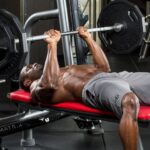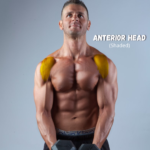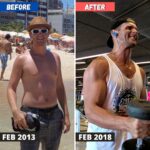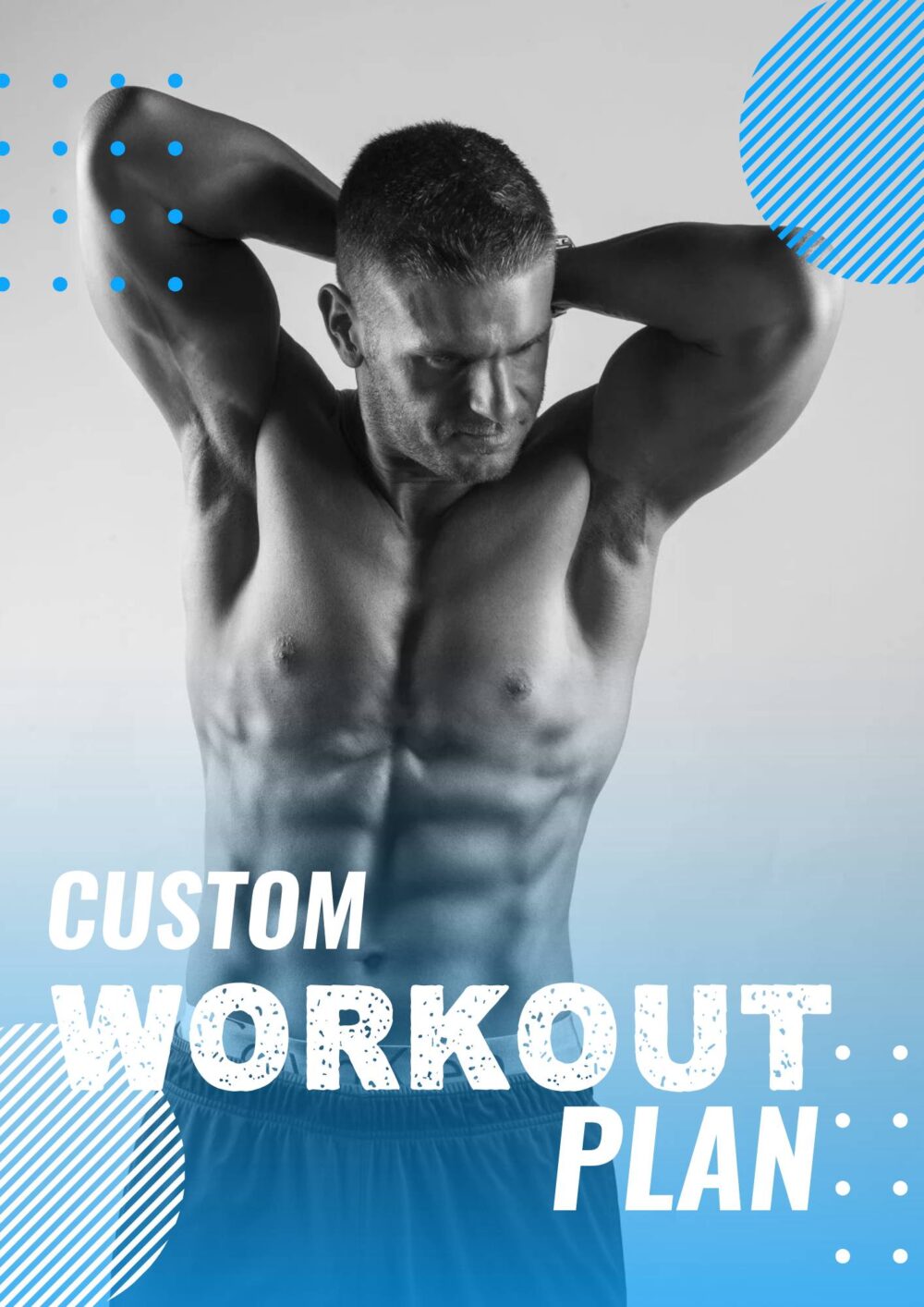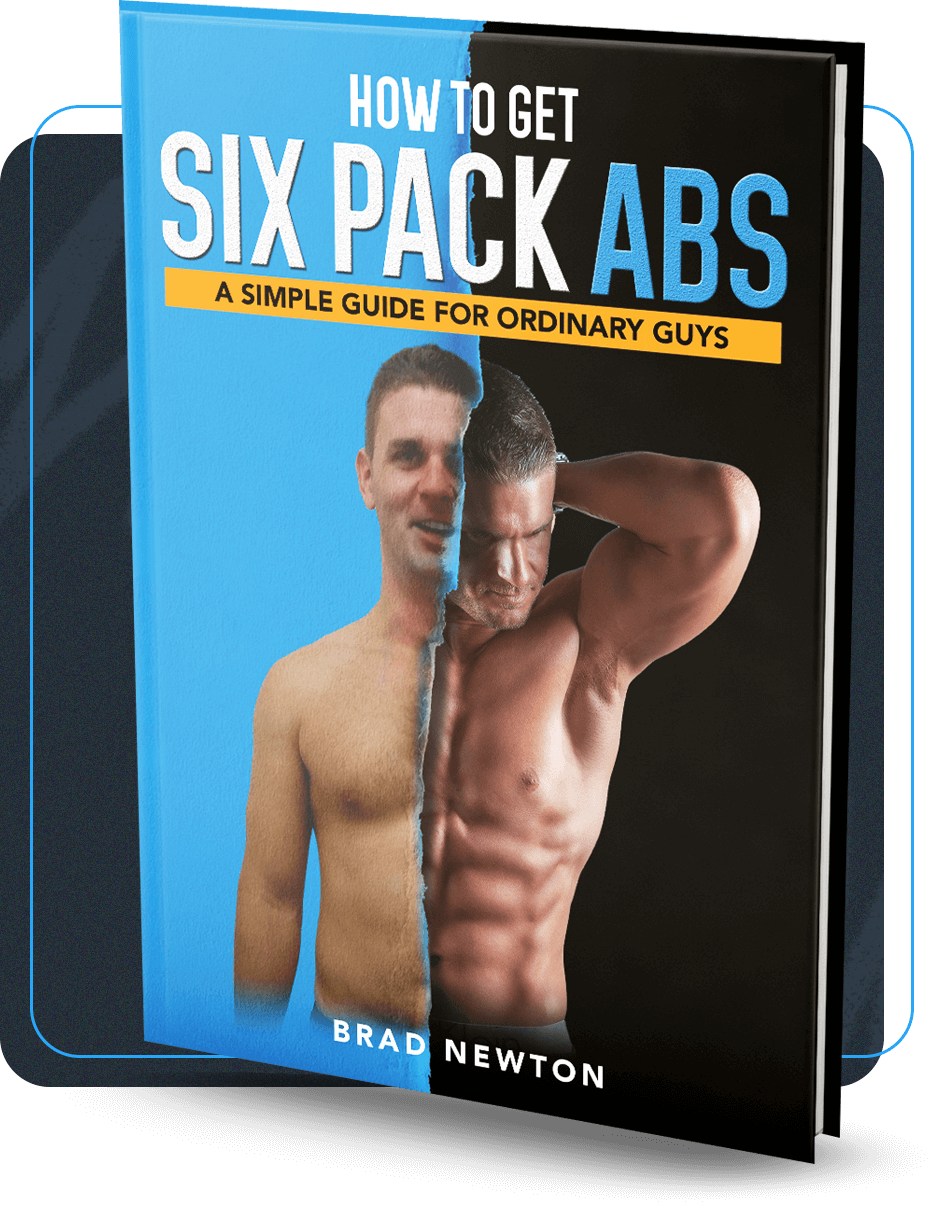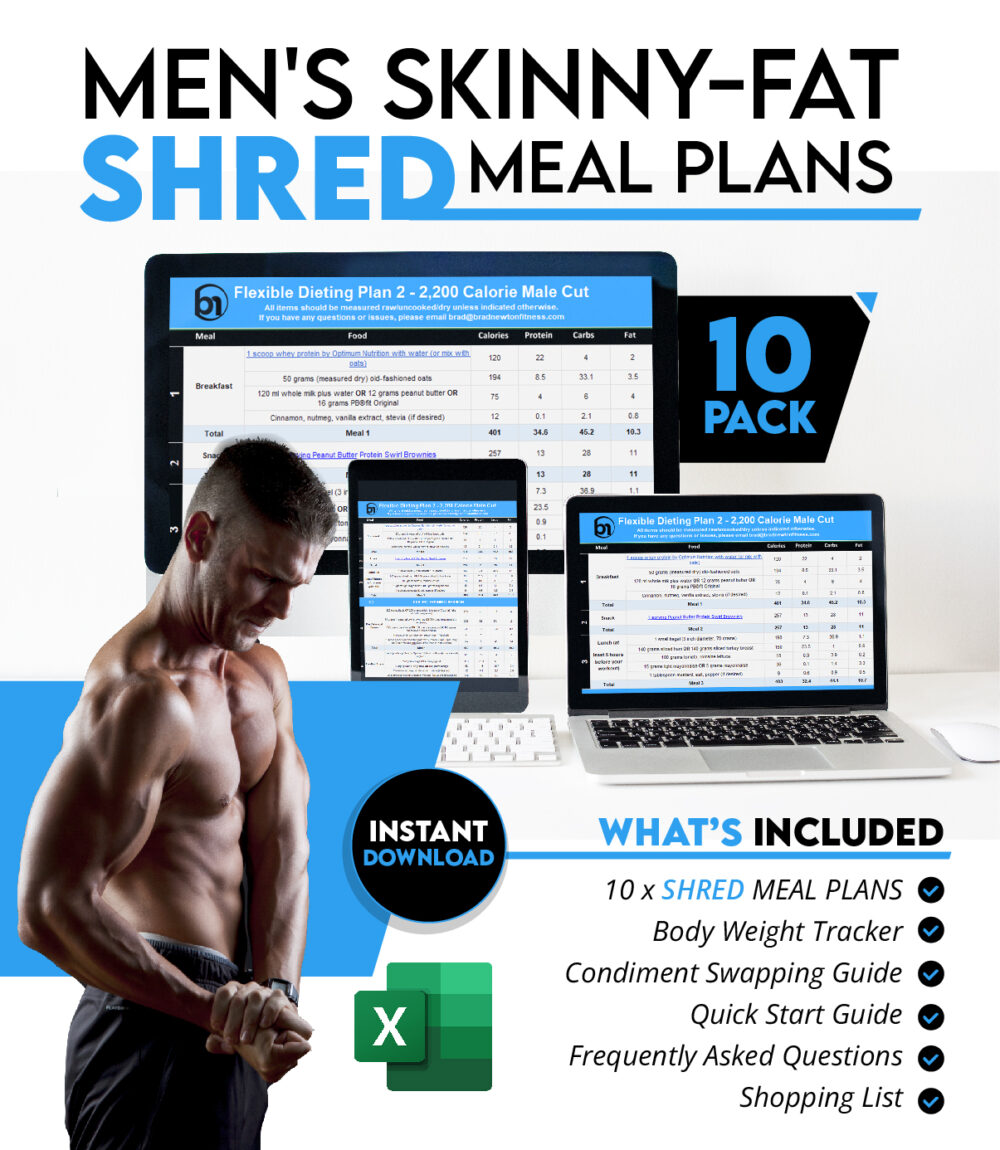Ten years ago, as a skinny-fat guy trying to figure out how to build muscle as a natural weightlifter, I asked Google the following questions:
- “What are the best exercises for building muscle?”
- “Should I use heavy or lighter weights?”
- “What’s the best rep range?”
- “What type of workout split is most effective?”
- “How many days per week should I train?”
Following dozens of hours (perhaps weeks) of extensive research, I found myself frustrated, bewildered, and somewhat perplexed due to the abundance of conflicting advice and opinions to these questions.
To provide context, this was my physique when I was trying to “figure out” how to build muscle (and shred fat).

Yep, a very skinny-fat and soft-looking beach body right there! 🙁
Nowadays, I presume most people would often turn to ChatGPT for guidance, yet when I tested it myself, even the AI dishes out contradictory suggestions when presented with slightly different search queries.
On a quick note, the nutrition component of a transformation is undeniably crucial, and when seamlessly integrated into this training blueprint, can speed up your results in the gym beyond what you believe is possible! Both nutrition and training are equally important for this transformation to work.
The Backstory
During the initial 2 years of my fitness journey, my training was solely focused on the 10-to-12 or 12-to-15 rep range, emphasising the “cellular fatigue” pathway through high-rep sets, drop sets, and “feel the burn” sets.
I had an obsession with isolation exercises and deliberately avoided barbell, dumbbell, and compound exercises. Additionally, I maintained consistency, dedicating a minimum of 7 hours per week to gym sessions all while working an insane night shift roster.
After 2 years of work, this was the outcome:

I was disappointed and I knew if I didn’t radically change my approach, nothing would change. It’s not a “bad” physique but it wasn’t the look I was expecting after 2 years of dedicated training.
My physique radically transformed when I started focusing on training in the 6-to-8 rep range, lifting heavier weight, and dedicating my time and effort on “progressively overloading” on the big compound exercises such as the deadlift, bench press, overhead press, and barbell squat (more on these soon!)
I also tied this new training approach into a properly structured bulk, then cut, which I discuss elsewhere on this site.
After another 2 years or so, this was the end result:

Much better! During this period, I not only successfully developed muscle through effective training and proper dieting, but my strength also saw remarkable gains. Over the span of two years, I increased my bench press by approximately 100 lbs, my overhead press by 55 lbs, my barbell squat by 190 lbs, and my deadlift by an impressive 220 lbs. I shortened my gym sessions down to 3 to 5 hours each week and through all of this, I was still working an insane night shift roster of 7 consecutive days.
What left me astounded was the outcome, as I had previously believed, like many others, that heavy weightlifting primarily contributes to strength gains rather than muscle growth.
It’s also worth mentioning that I never needed to, nor did I have the desire, to go anywhere near steroids or any performance enhancing drugs. I wanted to learn how to build muscle naturally by applying a simple weightlifting framework that I’m about to share with you.
As I reflect on my story with almost ten years of training experience, I must warn you, though, before proceeding, you must accept the following truths associated with building muscle.
- It’s simple. It’s not as complicated as you’ve been led to believe.
- There are no shortcuts. You must pay the price and put in the hard work; trusting the process as you won’t miraculously see muscles popping out in the first few weeks of lifting.
If you can embrace these realities, you’re poised to liberate yourself from the noise and finally discover what it genuinely takes to sculpt the body you desire.
How to Stimulate Muscle Growth

Above, is a photo of me once I had figured out how to build impressive amounts of muscle on my “skinny-fat” frame using a push-pull-legs routine (discussed shortly).
A decade ago, I wish I had grasped this concept within the initial week of embarking on my transformation journey. That is: the key to developing larger and stronger muscles lies in progressively increasing the tension they can generate.
This can be categorised into one of three fundamental “pathways” for building muscle:
- Mechanical tension involves the force generated in muscle fibres through stretching and contracting. This tension comes in two forms: “passive” tension, occurring when muscles stretch during resistance training, and “active” tension, which takes place during muscle contractions.
- Microscopic damage to muscle fibres is induced by elevated tension levels. Whether this muscle damage directly contributes to muscle growth or is simply a by-product of mechanical tension remains uncertain, but for now, it is a noteworthy inclusion on the list.
- Cellular fatigue encompasses various chemical changes occurring in and around muscle fibres as they contract repeatedly. Taking a set to muscular failure, where you can no longer move the weight despite exerting maximal effort or coming close to it, results in significant cellular fatigue.
Different types of training can highlight these three factors in varying ways. For instance, a lifting program characterised by low-volume and high-weight places emphasis on progressive overload and muscle damage, while high-repetition “pump” training emphasises the cellular fatigue pathway.
Among these three factors influencing muscle growth, research indicates that mechanical tension provides the greatest stimulus for muscle building than both muscle damage and cellular fatigue. Therefore, for optimal productivity in strength training, emphasis should be placed on magnifying mechanical tension over muscle damage and cellular fatigue.
As a natural weightlifter, therefore, your primary objective should be to get stronger on compound exercises such as the barbell squat, deadlift, bench press, and overhead press (more on these exercises shortly).
Here’s another lesson I learned after all of these years of training and I can boil it down into a simple rule of thumb as a natural weightlifter: The greater the weight you can push, pull, or squat, the more muscular you’ll become!
Consequently, the question arises that I posed almost a decade ago: which is more effective for gaining muscle and strength? Lifting heavier or lighter weight?
The answer lies in training with heavier loads rather than lighter ones. Heavier loads generate more mechanical tension, activating greater muscle growth and, subsequently, increased strength. When I increased the loads I was lifting for the major compound movements, the rep range I needed to operate within was the 6-to-8 rep range.
However, merely lifting heavy weights isn’t sufficient to sustain continuous muscle growth. To achieve this, a steady progression of mechanical tension levels in the muscles is essential, known as progressive overload.
Week by week, month by month, and year by year, the goal is to lift increasingly heavier loads that induce higher levels of mechanical tension in the muscles. This also involves tracking every single rep, set, and weight inside either a tracking app such as FitNotes (my personal favourite), or in a work-out journal.
Push Pull Legs Routine
In this article, the focus will be on three types of movements that have stood as staples in strength training for over a century.
- Push exercises
- Pull exercises
- Lower body exercises (i.e., squatting)
This is often referred to as a “push pull legs” training split and is one of the most effective weightlifting routines that you can follow. I have personally followed this routine for almost 10 years and it’s wholeheartedly responsible for my own fitness transformation.
This training split allows you to train every major muscle group in your body while optimising volume, training frequency, and recovery. You only need to spend 3 days a week in the gym for a maximum of 70 minutes (per session)!
Now, let’s delve into each of these movements and understand why they play a crucial role in sculpting an outstanding physique.
Push Exercises
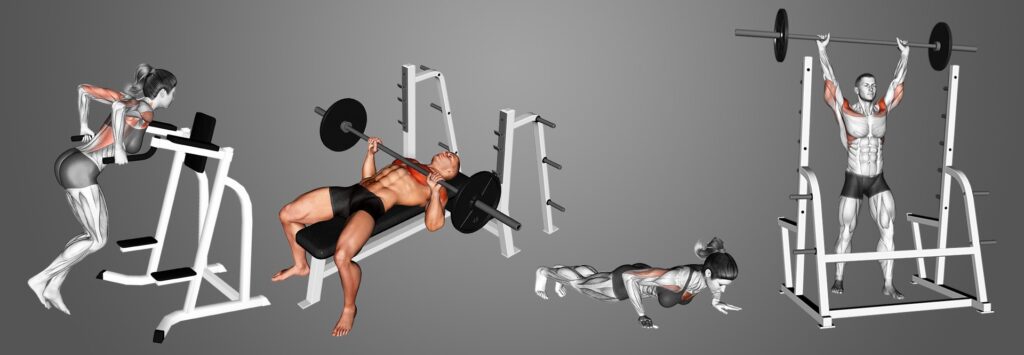
Push exercises exert a force against resistance. Push workouts focus on the muscles involving major muscle groups above the waist, including the chest (pecs), shoulders (deltoids), and triceps.
In a well designed “push” program, your push workouts should typically revolve around the following exercises:
- Incline and flat dumbbell and barbell bench press
- Standing (or seated) military pressing and,
- Isolation exercises for your triceps.
Push exercises also allow other muscle groups to recover or remain unfatigued as the chest, deltoids and triceps are developed separately.
Most people, including myself, refer to this training session as “chest and tris” (triceps).
Pull Exercises
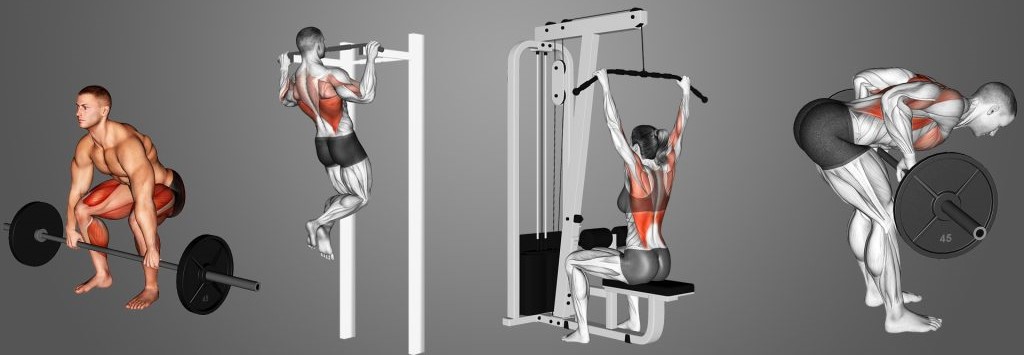
Pull exercises involve pulling something towards your body. Pull workouts focus on the muscles involved in upper body pulling motions, including back muscles and biceps.
In a well designed “pull” program, your pull workouts should typically revolve around the following exercises:
- Deadlifting
- Pull-ups (wide-grip and close-grip)
- Chin-ups
- Dumbbell and barbell rows
- Pendlay rows
- Lat pull-down
- Isolation exercises for biceps such as bicep curls, hammer curls, etc.
I usually refer to this type of training session as a “back and bis” (biceps) session.
Lower Body Exercises

Lastly, lower body exercises involve targeting the muscles below the waist, including the hip muscles (hip flexors), quads, glutes, hamstrings, and calves. These exercises are critically responsible for building a well-rounded physique and must be included.
Most guys, including myself (in the past), typically run from lower body exercises (skip leg day?) for safer bets such as “chest day.” Stop running from them… include them!
In a well-designed “legs” program, your leg work-outs should include the following exercises:
- Front and back squats
- Hack squats
- Deadlifting
- Lunges
- Leg press
- Isolation exercises such as leg extensions, leg curls, calf raises, etc.
The Bottom Line
There are three major points that I want you to take away from this discussion as you embark on your own fitness transformation journey. They are:
- Focus on progressive tension overload for building muscle and strength, and aim to add weight to the bar week after week, not reps. Track this using FitNotes.
- Focus predominately on multi-joint compound exercises such as the barbell bench press, deadlift, overhead press, and barbell squat. These exercises will produce 80% of your results!
- Focus on lifting heavier weight for few reps (i.e., 6-to-8 reps). This is more important than maximising cellular fatigue through high-rep sets, drop sets, “burn out” sets, and so forth.
If you’ve never tried a push-pull-legs training routine before, then I recommend giving it a go and see how your body responds. As a natural weightlifter, this routine fundamentally changed my life. I’ve also written extensively about push-pull-legs in my popular article on my website.


